#Nonomiya Jinja
Explore tagged Tumblr posts
Text
Torii
The Origins of Torii
There are two kinds of Sandō (road that approaches the shrine), a road that comes from a town or city and continues to the shrine, and the road from the entrance of the shrine to the Haiden (Prayer Hall) • Honden (Main Hall). Both are sacred roads in which visitors walk, and mikoshi are carried along the path. Therefore in order to demarcate the sacred land, torii, koma inu, stone lanterns, etc… are placed. Koma inu, and stone lions will be discussed later on, here is where torii are being discussed. In fact the origin of Torii is not clear. From extant examples and paintings in picture scrolls, it is known that a similar type of torii existed in the 12th century, but it is not known when and for what purpose they were built.
Why are there so many different types of Torii?
The present torii gate functions as a symbolic gateway, indicating that the area inside (beyond) the gateway is sacred ground. It also serves as a warning that any disrespectful behavior beyond the gate will result in punishment. Another feature of torii gates is that there are many types. It is said that the shape of the torii may have indicated the type of kami, but this is not certain. The form can be broadly classified into the Shinmei type and the Myojin type. While the Shinmei type is simple, the Myojin type is highly decorative and sometimes painted in vermilion. This may be related to the fact that Myojin-style torii are often erected at shrines of common people’s beliefs, as they have a strong sense of Shinto/Buddhist syncretism.

Parts of a Torii Gate
笠木 Kasagi
Cap Piece that covers the top of a Torii
島木 Shimagi
Long horizontal timber above the columns on a Torii, right below the Kasagi
台輪 Daiwa
The single piece placed where the columns meet the Shimagi, believed to prevent rot from setting in from the top of the pillars
額束 Gakutsuka
The plaque that holds the name of the shrine
楔 Kusabi
Wedges/Lynchpins
貫 Nuki
Lower horizontal timber, traditionally does not pierce the columns, and in Shinmei style torii, is said to be round
柱 Hashira
The two vertical columns leading up to the horizontal bars
藁座 Waraza
Reinforcement for the Daīshi at the bottom of the torii
台石 Daīshi
Stone pedestal at the bottom of torii
亀腹 Kamebara
White plaster bun-shaped mounds used to reinforce support base stones.
Varieties of Torii
神明系 Shinmei Style

Image Sources: 1 , 2 , 3 , 4
黒木鳥居 Kurogi Torii
Made from logs where the outer bark is still attached. Seen at shrines like 野宮神社 Nonomiya Jinja.
鹿島鳥居 Kashima Torii
The lower cross bar is quadrilateral (instead of rounded), and sticks out past the pillars holding the torii up. Seen at shrines like 鹿島神宮 Kashima Jingū.
神明鳥居 Shinmei Torii
The pillars, top crossbar and lower crossbar are all rounded. See at shrines like 神明宮 Shinmeigū.
伊勢鳥居 Ise Torii
The upper crossbar is pentagonal in shape. Seen at shrines like 伊勢神宮内宮・外宮 Ise Jingū Naikū • Gekū and 熱田神宮 Atsuta Jingū
明神系 Myojin Style
Usually these have the cap piece called a Kasagi while Shinmei do not

八幡鳥居 Hachiman Torii
The edge of the top bar is slanted. Seen at shrines like 岩清水八幡宮 Iwashimizu Hachimangū.

台輪(稲荷)鳥居 Daiwa (Inari) Torii
Below the upper crossbar are Daiwa (see above definition). Seen at shrines like 伏見稲荷大社 Fushimi Inari Taisha.

春日鳥居 Kasuga Torii
Less warping of the cap piece and upper crossbar (fairly flat). Seen at shrines like 春日大社 Kasuga Taisha.

両部鳥居 Ryōbu Torii
Has smaller support columns attached to the main pillars. Seen at shrines like 厳島神社 Itsukushima Jinja, and 氣比神宮 Kehi Jingū.
中山鳥居 Nakayama Torii
The same as a Myōjin Torii, except the lower crossbar doesn’t stick out. Seen at shrines like 中山神社 Nakayama Jinja.

Image Sources: 1 , 2
明神鳥居 Myōjin Torii
Both the upper and lower crossbars have warping (meaning they’re more curved). Seen at shrines like 神田明神 Kanda Myōjin.

山王鳥居 Sannō Torii
Above the Kasagi, there is an extra part called the Gasshō, which is a triangular shaped piece. Seen at shrines like 日吉大社 Hiyoshi Taisha.

三輪鳥居 Miwa Torii
To the sides are smaller support torii. Seen at shrines like 大神神社 Ōmiwa Jinja.
Translations of this page

4 notes
·
View notes
Text
My Trip to Japan! ⛩️ Part 3
16.12
We had breakfast as soon as service started at 6:30, and then went to take the Shinkansen to Kyoto. The trip lasted just under an hour, and we arrived at 8:30. It was an adventure to get out. It would take us a day and a half to figure out the right way to move around the gigantic Kyoto station without getting trapped like a rat in a maze. We left the suitcases at the hotel, conveniently located just opposite the station, and went straight to Kinkaku-ji, the temple of the Golden Pavillion. The titlepavillion is one of several that make up the temple, though none as spectacular. The gardens were a delight. We had matcha tea at the temple's tea house, with a very tasty sweet bearing the pavillion’s outline and a touch of gold leaf.
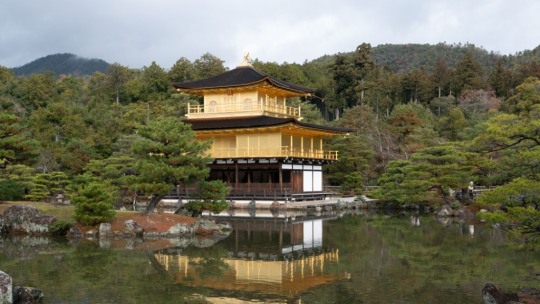
We continued to the next temple, Ryō-An-ji. I liked this one a lot; it has a large stone Zen garden that invites contemplation... until the school outing arrives and misaligns all your chakras. On the way out, I bought a beautiful maiko doll for my niece, and we had a butaman, a very fluffy bread ball filled with pork. Very tasty.
Next on the itinerary was Ninna-ji, with an impressive monumental gate and a cherry blossom promenade that must be a dream during hanami season. Ninna-ji is an extensive complex, with many pavilions and a five-story pagoda. It was already 1 pm so we took a cute vintage train to Arashiyama, where we had some delicious sobaforlunch, looked at shops, and peeked at the Katsura River before attacking the fourth temple of the day, UNESCO World Heritage Site like the other 3: Tenryū-ji. This was the one that caught my attention the least (or maybe I was already saturated), but next to it ther’s the bamboo forest. You don't enter the forest proper, which is fenced, but walk through a pathway opened between the canes. Still, the height, greenery, and coverage of the bamboo canopy are impressive. You could hear the crackling of the canes hitting each other.
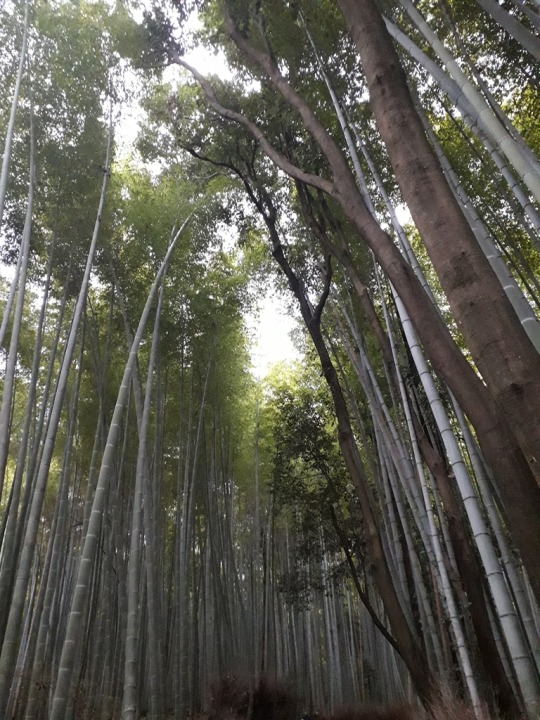
On the way back to the train, we happened to pass by a Shinto shrine in the middle of the bamboo forest, Nonomiya jinja, beautiful in its simplicity. Imperial princesses came here to purify themselves for at least a year before going to the Ise Shrine to ervve there on behalf of the emperor. Even if the custom ended in the 14th century, Nonomiya shrine still enjoys the favor of the imperial family.
In the evening we strolled a bit through the picturesque Gion district at night, had dinner, and went to bed for the next early rising.
17.12.
We got up at six sharp to go to the world-famous Fushimi Inari-taisha, the “shrine of the thousand torii” (ritual gates). We missed the train we wanted to take, lost in the mega-station, but we still arrived in time to start well before the hordes of visitors arrived. Even before entering, I witnessed something that gave a hint of how special this place is: while we were have breakfast in front of the konbini opposite the main entrance, a taxi stopped, the driver got out, prayed facing the temple right there on the tarmac, and continued his route.

The shrine was founded in the 8th century, dedicated, like the mountain where it sits, to Inari, the Shinto deity of rice, agriculture, and business, whose messenger animal is the fox. Therefore, fox-shaped statuettes are omnipresent on the altars spread all about the mountain. We went in, toured the different halls, and started the climb up Mount Inari along the torii-lined path. These gates are erected as votive offerings; the large ones, like the ones along the path, can cost as much as a luxury car, so they usually come from companies, but many minor shrines hold small, smaller, tiny, keychain-sized torii gates. Throughout the mountain, there are literally thousands of shrines: new and old, luxurious or very humble, alone or in groups, next to the path or hidden in the forest, pristine or claimed by nature.
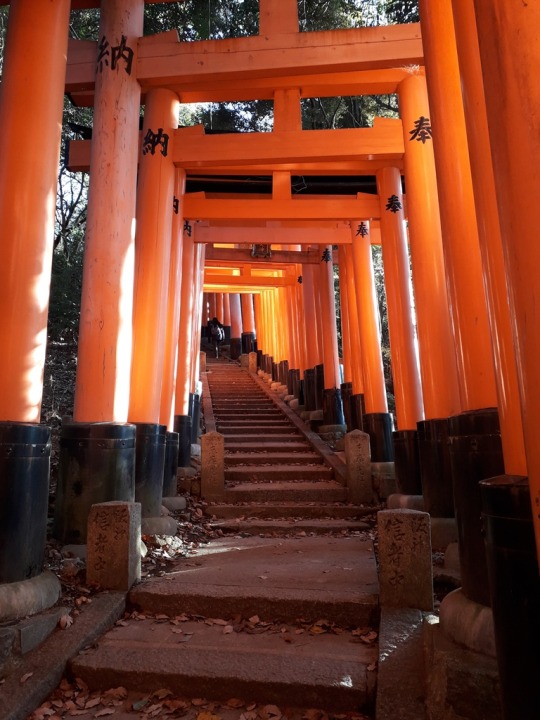
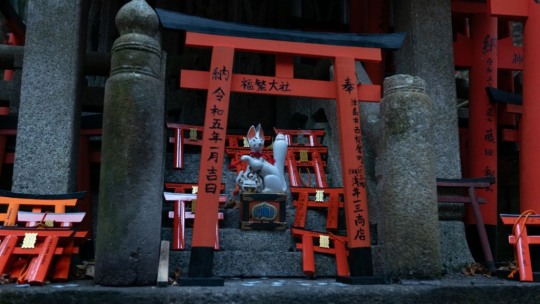
Regardless of each person’s beliefs, Fushimi Inari has more than earned its sacred mountain status. Its atmosphere is tremendously spiritual. Even as I write this I get emotional, as I recall the overwhelming feeling that gripped me most of the way, despite the growing number of people appearing as the day progressed.
After leaving the shrine, we ate some takoyaki on the go and went to the center, to Nishiki Market, a covered street with very nice shops, especially food ones. I stopped at one which had all kinds of beautiful things, had my loot, and when I got to the cash point, the old lady took all her time to perfectly wrap the humble set of Hina dolls that I had bought. Position, bag, box, bag… I legit felt like Alan Rickman in Love Actually when Mr. Bean wraps the gift for his lover. Three times I told her she didn’t need to peel the price tags, as everything was for myself. Forget it, the price tag must go. We ate some more takoyaki to complete lunch at a place that only sells that. The basic ones were ¥280 (€1.90) for 6. In Europe, they charge you €5 for 4 balls. After eating, we went to Ginkaku-ji, the Silver Pavilion, with beautiful gardens and not as crowded as the golden one (spoiler: it's not covered in silver. That was the idea, but it never materialized).
We went down a little street that borders a canal called "The Philosopher's Path". A very bucolic and pleasant stroll, with a lot of green, traditional houses and hardly any shops, just art galleries or craft workshops. The last temple of the day was Eikan-do. Larger than we anticipated, it’s set within lush gardens and is beautiful: its many pavillions include a pagoda and a curved staircase nicknamed "sleeping dragon." Next to these stairs stands the three-needle pine, whose needles grow in groups of three, not two. It’s said to symbolize the virtues of wisdom, mercy, and sincerity. And that if you get a pine needle like that, you will be blessed with all three. Unfortunately, with everything being so clean, there was none within my reach.
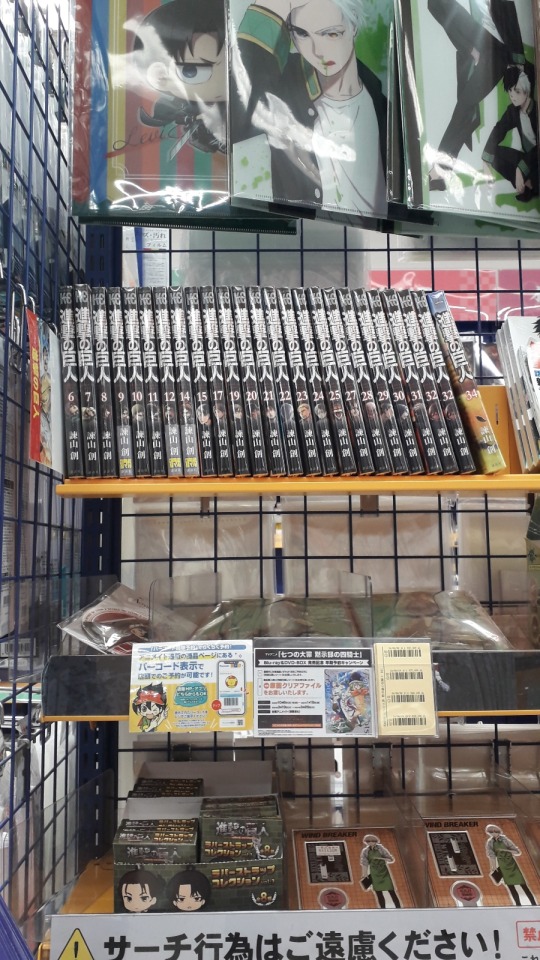
⬆️ I haven't talked much about shopping so far, because the truth is there was hardly any AoT merchandise anywhere. These on the picture above are the only items they had at the Kyoto Animate store: One (1) chibi Levi clearfile; random manga volumes; One (1) Ereh acrylic stand and One (1) Levi one but it was teen Levi, not looking hot; and a "surprise" box with some chibi stuff but I'm certainly NOT spending 880¥ in a surprise. That's it. Neither Donki nor the discount place opposite had jackshit.
We had dinner on the 11th floor of the train station. Kyoto Station's building is a monster of engineering; the north hall rises ten floors above street level and includes a monumental staircase with LED colors on the risers that play with lights and even reproduce entire videos in full color (we saw the trailer for the latest Disney movie); on that side, there’s a huge department store, of which the last two floors are food courts: the 10th floor is only ramen restaurants, and the 11th floor has a bit of everything. We had beef tongue, a favourite of mine. After dinner, we went to the Sky Gallery, a walkway emerging from the 10th floor, with panoramic views of the station and the city.
18.12.
We woke up early and had breakfast at the hotel buffet, supposedly "western style," which turned out to be a hit-and-miss, not so much because of the Japanese version of what you can find at a buffet in Europe or the US, but because many of those dishes were cold, when they’re eaten warm in the West.
We started the day at Kiyomizu-dera, very spacious, with a clarity inside the temple that I hadn't seen in other Buddhist shrines. The impressive views over the city from its balcony supported by a structure of 13-meter-high wooden pillars are noteworthy. We walked down, looking at shops in Gion (there was a Ghibli shop here too!) and then we looked for an early lunch, as we had booked a kimono tea ceremony at one.
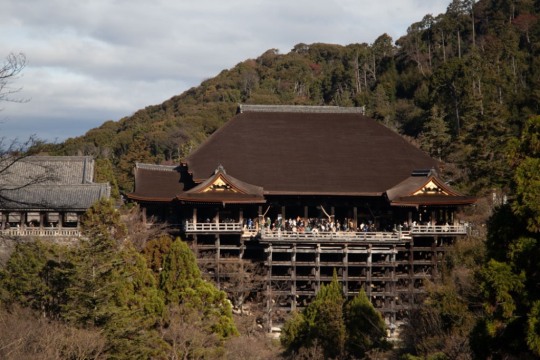
The buildig where the tea house operates is a registered cultural property. They dressed me in a kimono for me: an underrobe, tied with a ribbon (which straightens your back), the kimono itself, tied wit another ribbon, a plate to hold the obi (sash) in place, and the obi. They did my hair, and I proceeded to the salon, where Husband was already waiting for me looking like a full-fledged samurai. We were in a group of 8: us, an Australian couple about our age, and an Asian-American family of dad, mom, and two teenage children. Luckily, everyone was motivated and respectful of the place and the ritual.
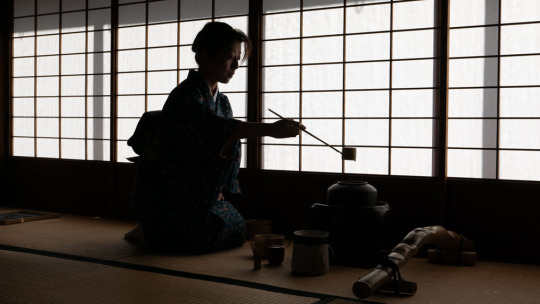

After the hostess showed the entire process, she taught us how to whisk the matcha, and we enjoyed our tea (the traditional way is that everyone takes turns drinking from the same cup, but since the pandemic, each one gets their own bowl). Previously, we tasted sweets. One of them was a kind of dumpling filled with anko that blew my mind. It's called yatsuhashi and is a Kyoto specialty. The hostess wrote the name on a piece of paper for me and everything, but... My joy was short-lived, as when I went to buy it, the expiration date was quite short, so I could only got a small package to eat as soon as we returned home. Once the ceremony was over, we took photos at will in the house garden before returning the kimono.
In the afternoon we went to Nijo Castle, with impressive paintings on the door panels and exquisite marquetry on the lintels and ceilings. The historical significance of this castle is enormous, as it was the place wher the Tokugawa shogunate, better known as the Edo era, both began and ended. After the castle and more walking around the city centre, we had dinner and dragged ourselves back to the hotel, exhausted, and prepared everything to go to Nara the next day.
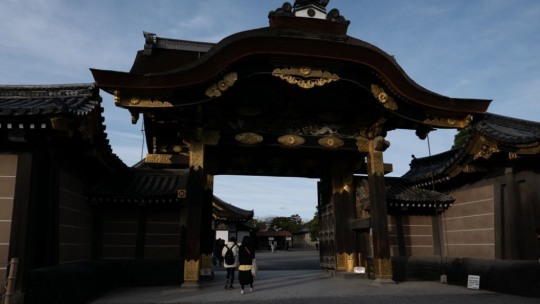
9 notes
·
View notes
Note
Trick or treeaaat!~
Okay, so this is a story from the last time I was in Kyoto, in 2018.
There’s an area in northwestern Kyoto called Arashiyama, and there’s a very famous bamboo forest there. That said, Arashiyama gets very crowded and Dad and I ended up being pretty significantly delayed. We didn’t make it to the bamboo forest until well after dark.
That forest is very beautiful during the day, but it’s… a lot at night. There’s very little lighting, so you can’t really tell what’s happening around you. All you can hear is the rustling of the bamboo in the wind, and it’s a very spooky sound.
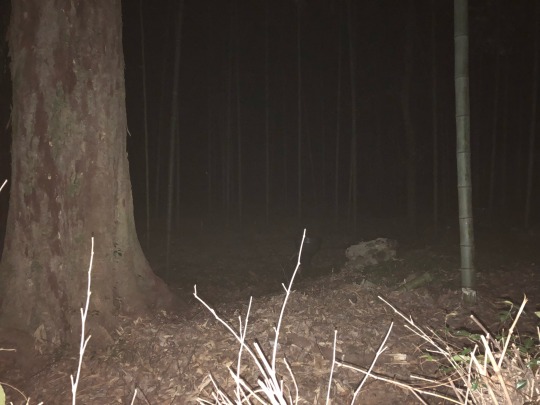

And while we were walking around the area, we came across a shrine, Nonomiya Jinja. I turned to my dad and said, “Wanna hear a ghost story?”

See, Nonomiya Jinja is actually really famous. Traditionally, it was where female members of the imperial family went to be purified before becoming priestesses at Ise Jingu. It’s also in The Tale of Genji. Essentially, one of Genji’s many lovers can’t handle her jealousy anymore so she goes out to the shrine. She and Genji have a very tearful farewell, and she decides to accompany her daughter to Ise.
So where do the ghosts come in? Well, there’s a very famous noh play based on this story, where a traveling monk comes across the shrine and the ghost of that courtier is there and tells him her tragic story before disappearing into the night.

I watched that play in school, so it’s my primary association with the shrine.
So it’s the middle of the night, all we hear is bamboo clacking together and all we see is the light from this haunted shrine, and I’m telling Dad this story, and… well.
Let’s just say that Dad still complains about how spooky that forest is at night. lmao
14 notes
·
View notes
Text
May 27 - Arashiyama Bamboo Forest / Arashiyama Monkey Park
Freewriting
Today started like most others, at 8 with a quiz followed by a hurried walk (jog) to our morning class meeting. In class today (while eating my breakfast bento) we discussed historic and modern forestry management in Arashiyama as well as the Sakai chapter of The Tale of Genji. Following our class meeting, we took two trains to Arashiyama where our first stop was the bamboo forest. The bamboo forest was both massive and dense, so much so that it felt like something out of a movie. While inside of the bamboo forest, we visited Nonomiya-Jinja Shrine (a key location mentioned in todays readings.) The shrine was smaller by comparison to many of the other shrines that we have visited in Japan thus far but it was really cool nonetheless (I especially liked the thick moss carpet growing on the ground by the shrine and how hidden it was within the dense bamboo.)
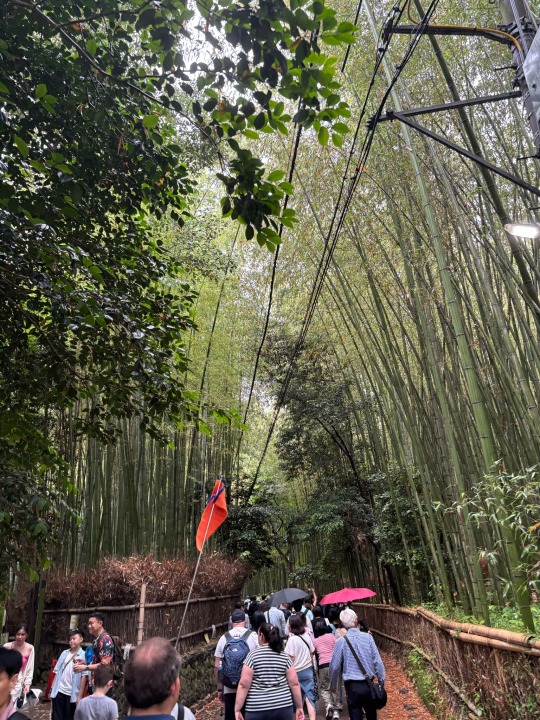
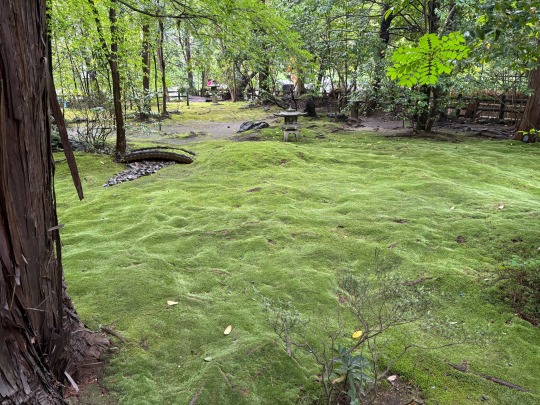
Our next stop in Arashiyama was one of my favorite places we have gone in Japan so far, the Monkey Park. It is exactly what it sounds like and it was just as awesome as it sounds. After a short but STEEP hike up a small mountain, we arrived at the area with all the monkeys. There were monkeys everywhere and they were walking right up to and past us. Some of them were adorable and some were a little unsettling but they were all unbothered by our presence. After taking a class photo and watching the monkeys for what must of been more than an hour, I went into the small building where you could feed the monkeys through a wire fence. This was a highlight for me, I paid 100 yen (like 65 cents) for a bag of apple slices that I fed to a bunch of the monkeys. The smaller ones put their hands through the bars and the larger ones would wait on the other side with an open palm. Both types of monkeys would gently take the apple slices right out of your hand before scarfing it down (it was very cute.) One monkey was very adamant that I should give him more, hollering with his little hand through the bars (almost like he was staying "gimme dat!")
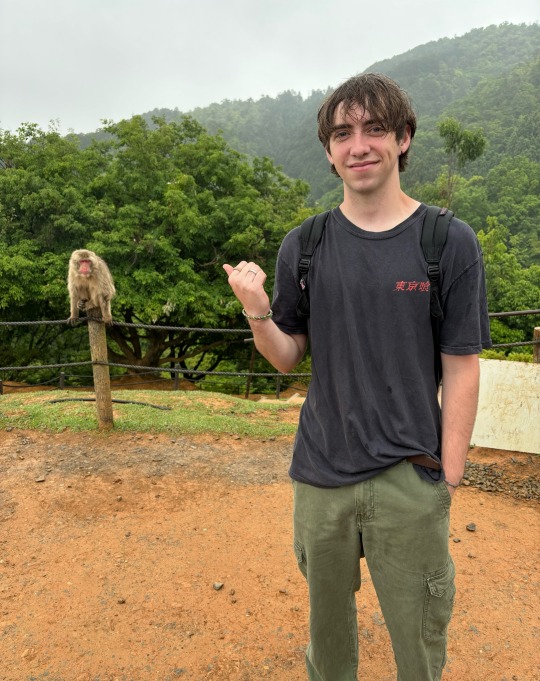
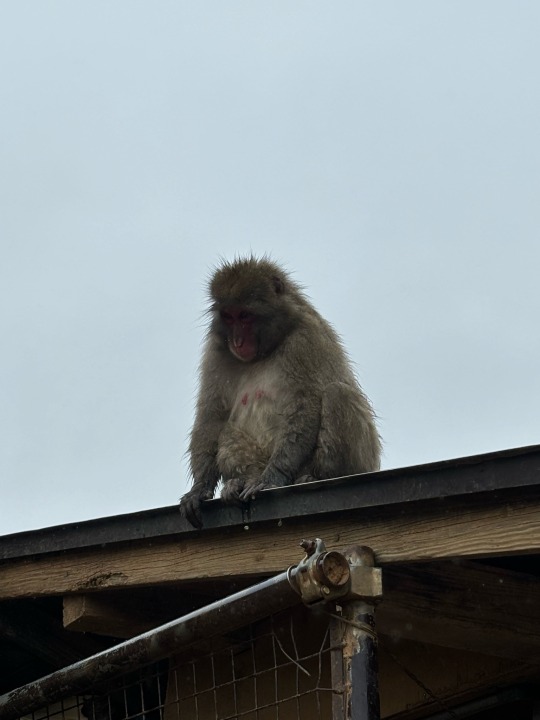
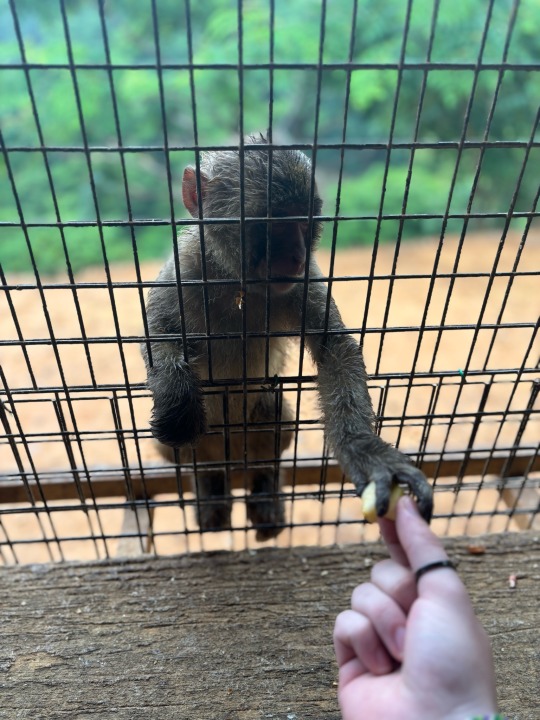

After running out of apple slices, I headed down the mountain and into town to grab some lunch. In town, I had a sashimi bowl that was really good before walking around Arashiyama a bit.
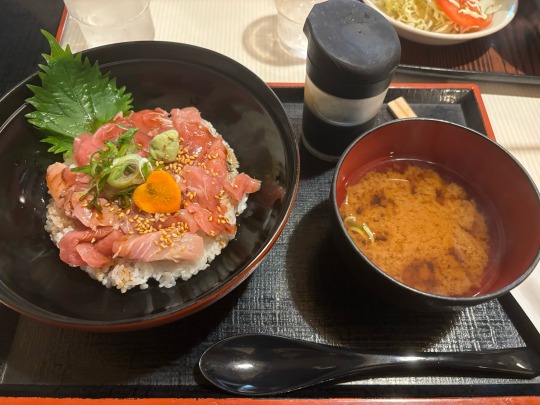

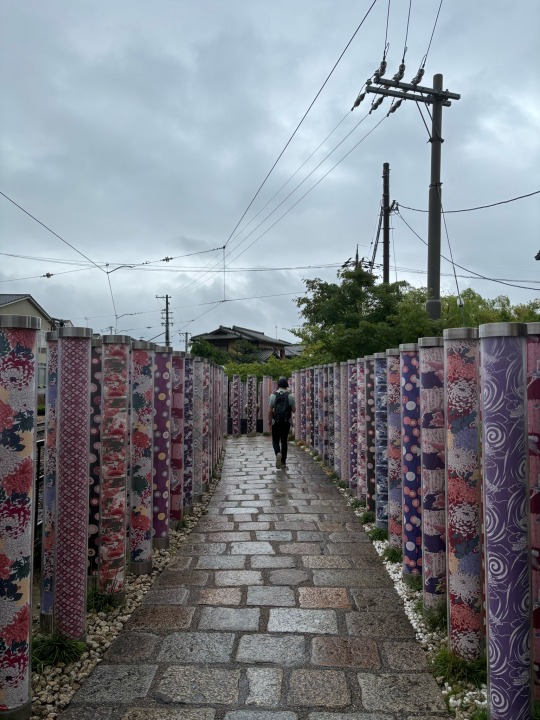
Leaving Arashiyama, I headed to Round One to play some games with a few of the guys. After playing some maimai and DDR, I grabbed a few more gifts for people back home before going to MOS Burger for dinner (still not great, Japanese McDonalds is definitely better.) After MOS, I headed to Stay SAKURA where I turned in for the night!
Academic Reflection
Todays first reading was about the history of Arashiyama Bamboo Forest. More specifically, the history of Japan's protection of the Bamboo Forest dating back to the Heian Era. Back then, protective legislation was put into place in order to preserve Japan's resources. Today, the protection of Arashiyama Bamboo Forest is centered around protecting its scenic views and preventing erosion in the region. Since the Heian Era, Arashiyama Bamboo Forest has faced a multitude of problems stemming from poor legislation, natural disasters, rampantly expanding animal populations and even arboreal disease. Walking through the forest today, I was very pleased that the historic sight had pushed through all of these hardships. I also gained a deeper understanding for why historically, Japan has gone to such great lengths to preserve this natural wonder.
Todays second reading, the Sakai chapter of The Tale of Genji, related to todays excursion by way of Nonomiya-Jinja Shrine (which is located in Arashiyama Bamboo Forest and is a key location within this text.) Nonomiya-Jinja Shrine was constructed as a temporary shrine, intended for the future priestess of Ise. Within the reading, Lady Rokujo (also adressed in the story as The Girl of Nomomiya) who is a mistress of Genji, kills another one of his mistresses. To be honest, this reading was a little hard to follow for me, similar to the Bunraku reading from Tokyo. Due to Genji and Lady Rokujo, today, Nonomiya-Jinja Shrine is known as the shrine of lovers and has shed its temporary status, becoming a perminant fixture of the Arashiyama Bamboo Forest.
1 note
·
View note
Photo

Tale of Genji stories in one post - see full gallery on Instagram.
1) (2nd photo) Nonomiya Jinja is a Shinto shrine located inside the Arashiyama Bamboo Grove, a pit stop for Imperial princesses on their way to serve as priestess of the Ise Grand Shrine/Jingu - like Akikonomu in the Tale of Genji. They had an informal quiz which @atorier translated for me. I failed 0 for 5. 2 questions were about character ages at various points of the story (I was within 5-8 years!!). 2 I misunderstood to be about Murasaki the character when they were actually about Murasaki Shikibu and was thoroughly confused at when these things were indicated in the story lmao. The last asked who was the model for Hikaru Genji. Scholars disagree on this and I’m personally in the court of Genji not being based on one particular figure, but I gamely answered Ariwara no Narihira. They used Minamoto no Toru. So much for my street cred.
2) At the Tale of Genji Museum in Uji I was excited to play the Genjiko incense guessing game! Basically it involves smelling a sequence of 5 incenses, identifying which are identical, and marking your guess with the matching Genjiko mon/seal. I thought their setup with stamps for each mon was very well-done. I got it right and the staff gave me a sticker that says I did it!!! I think they purposefully made it easy with really obviously different scents though…
3) Fukuju Saryo cafe (mentioned in my previous Uji post) had a pair of drinks based on the two main rivals of the Uji Chapters!! At first I was like “why is Niou matcha latte and Kaoru houjicha latte 🤨” then “oh houjicha is mild and matcha is bitter, okay I accept that.” @atorier was like “so judgey 🙄” I’m just excited I got to say “Kaorunokimi kudasai” which made the waitress chuckle 😂😂😂 and that I got to go to the closest thing to a Tale of Genji character cafe.
4) The museum had a lot of mannequins recreating the kaimami (peeping through screens and fences) scenes, and a section where you could see what it looks like to peek through Heian blinds, so I made a photo comic. Thanks Zanazac for modelling a sexy Heian lady.
Bless my friends for listening to me go on and on about the Tale of Genji. https://www.instagram.com/p/B3svRS3Bd33/?igshid=11cqbvul8m181
#tale of genji#genji monogatari#tale of genji museum#Uji#Kyoto#japan#travel#Nonomiya Jinja#Fukuju Saryo#kaimami#Genjiko
5 notes
·
View notes
Photo

Autumn colours at Nonomiya-jinja in Arashiyama, Kyoto-Japan.
#Arashiyama#Japan#Koyo#Kyoto#Landscape#Nonomiya-jinja#Nonomiya-jinja Shrine 野宮神社#Togetsukyō#autumn#autumn photography#maple leaves#matsuri#travel#trees#もみじ#嵐山#渡月橋#紅葉
5 notes
·
View notes
Photo
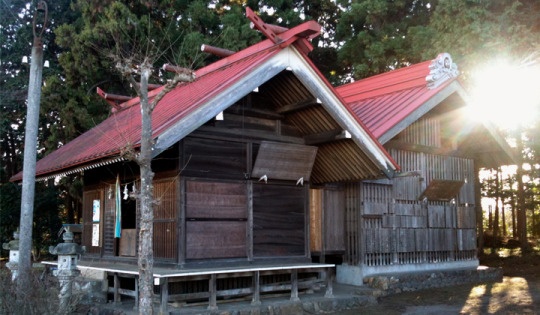
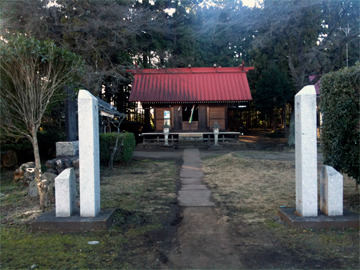

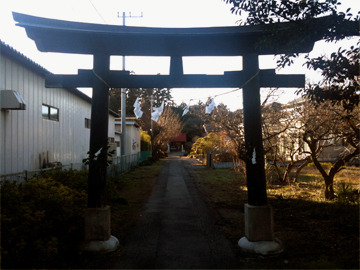
野々宮神社(埼玉県日高市)
https://www.sa-ka-ki.com/jinja/saitama/nonomiya/
65 notes
·
View notes
Photo

[ 光射す入り口 ] . . . 新緑に囲まれた神社の黒い鳥居に、 眩しい朝の光が射し込む。 . . . =================== 📷 2022.05 Nonomiya Jinja, Ukyo-ku, Kyoto . Nikon D5300 ⛩🍃⛩🍃⛩🍃⛩🍃⛩ =================== . . . #japan #kyoto #nonomiyajinja #nonomiyajinja_kurokinotorii #nonomiyajinja_kurokitorii #kurokinotorii #nonomiyajinja_shinryoku #nonomiyajinja_ryokuyo #nonomiyajinja_greenleaves #ryokuyo #nonomiyajinja_aomomiji #nonomiyajinja_momiji #京都 #野宮神社 #野宮神社_黒木鳥居 #野宮神社_新緑 #野宮神社_緑葉 #野宮神社_青もみじ #野宮神社_もみじ #緑葉セカイ #ryokuyo_sekai #新緑かおる頃 #the_season_of_shinryoku_is_here #ミドリキラリ #midori_kirari #緑葉の薫る神社 #jinja_with_green_leaves #神域の入り口に立つ #at_the_gate_to_the_sacred_area #nikond5300 (野宮神社) https://www.instagram.com/p/CeynyPHPL9S/?igshid=NGJjMDIxMWI=
#japan#kyoto#nonomiyajinja#nonomiyajinja_kurokinotorii#nonomiyajinja_kurokitorii#kurokinotorii#nonomiyajinja_shinryoku#nonomiyajinja_ryokuyo#nonomiyajinja_greenleaves#ryokuyo#nonomiyajinja_aomomiji#nonomiyajinja_momiji#京都#野宮神社#野宮神社_黒木鳥居#野宮神社_新緑#野宮神社_緑葉#野宮神社_青もみじ#野宮神社_もみじ#緑葉セカイ#ryokuyo_sekai#新緑かおる頃#the_season_of_shinryoku_is_here#ミドリキラリ#midori_kirari#緑葉の薫る神社#jinja_with_green_leaves#神域の入り口に立つ#at_the_gate_to_the_sacred_area#nikond5300
8 notes
·
View notes
Photo




野宮神社 Nonomiya-jinja
📍 Kyoto, Japan
#kyoto#japan#shrine#torii#nature#green#red#lantern#shinto#shintoism#photography#japan photos#photographers on tumblr#original photographer#original photographers on tumblr#original photography blog
20 notes
·
View notes
Video
Went today to nonomiya-jinja Amazing. Speechless. 今日行きました, 野宮神社. #神社 #京都 #日本 #すごい #私の日本での生活を良いものにしてくれた人達 #日本に住む外国人 #夏 #יפן #קיוטו #מגורים #חיים (at Nonomiya Shrine) https://www.instagram.com/p/B0izx-qh2s2/?igshid=16c5uv58ezg3y
1 note
·
View note
Text
📍Kyoto. June 9th 2019 Part 02
Location 04: Nonomiya-Jinja Shrine. This location was one of my favourites places. It was only small but full of history. You pass through a big Tori gate and see shrines dedicated to the sun goddess the diety of fire. The place has a strong feeling of peace and immediately upon passing through the Tori you feel calm and peaceful. There is another Tori gate to pass through with more shrines




Location 05: bamboo forest; Arashiyama! This location is so beautiful, you walk through hundreds of bamboo trees either side of you. It is a calming place



Final location: Pokemon centre! I couldn’t visit Kyoto without visiting the Pokemon centre! Letting out my inner child! The Pokemon centre had many different Pokemon figures that were adorable!



1 note
·
View note
Photo

Nonomiya jinja, Arashiyama, Kyoto
(Canon Eos 300V, Kodak Color Plus 200)
0 notes
Text









Day 9: Saturday, May 18th, 2019
* Kyoto City Bus 10 to Myoshinji Kitamon-mae
* Myoshinji Temple Complex
* Mindful Meditation class @ Shunkoin Temple
* Lunch at Osho
* JR line to Saga Arashiyama
* Bamboo Forest
* Nonomiya Temple
* Jojakko-Jo Temple Precincts
* JR line to Kyoto
* Kyoto Sky Tower
* Dinner at Pancake Room
* Nicotto & Mam Doughnuts
* Gion bus to Gion
* Yasaka-jinja shrine
0 notes


